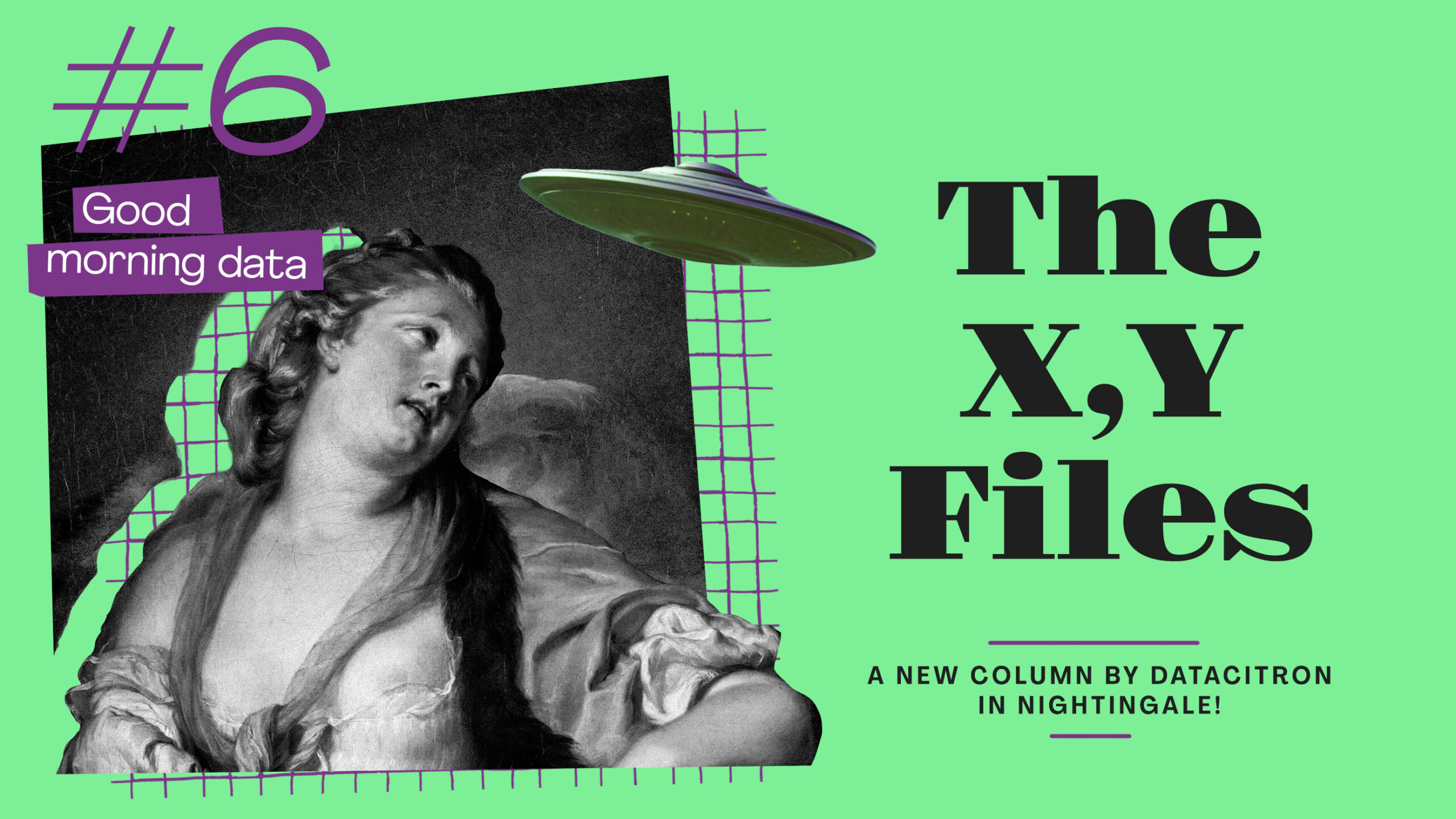The X,Y Files or “How do you communicate with extradatastrial clients?“
The encounter took place in the last hours of the evening. Nothing could have prepared me for it and I quickly felt overwhelmed. I was the sole representative of my species. The heavy burden of making myself understood was on my shoulder while they stood silent, unresponsive. It was obvious I couldn’t make myself understand. Words were useless. I tried gesturing, scribbling images on a scrap of paper, even making noise with my mouth. They grow from confused to annoyed, dangerously close to becoming menacing as they misinterpret my human babbling as proof of my unwillingness. Their kind was not the patient one.
The night grew darker. They were talking to each other now, with a language I couldn’t understand, either. I tried to make sense of the familiar yet unrecognizable words they used. With time, I grew more and more desperate, uncertain of my fate, relying on visual clues to estimate just how bad it was. Eventually they left, in the same flash of light they came with. Alone and a bit shaky, I gathered myself and tried to recover from what just happened to me. I closed my computer and sighed. Boy, that client meeting had been rough.
Believe me when I say I’m not here to bad-mouth clients. If I sometimes indulge in your typical client bashing, it’s always on my private hours and quite occasionally because most of the time, I have the best clients. I really do and feel extremely grateful for this. But every now and then, I stumble upon some difficult ones, as one does.
I’m not talking about the usual suspects here—the pressing ones that work with irrational deadlines, expecting your time machine to be particularly effective, or the adorable yet exhausting ones that keep changing the data every hour, or even the ones with expectations inversely proportional to their budget. No, I’m talking about the peculiar ones with whom all communication attempts seem to fail, the ones that speak in tongues, the ones that let you wonder if you heard correctly every time they formulate a request. Those are the worst in my book.
You would think that after a couple of years of practice now, I would be able to sniff them a mile away, but I usually recognize them when it’s too late and the train of the project has already left the station. I know I should have spotted them earlier by the very loose meaning they tend to give to the word “data.” Their definition of the term is a hazardous quicksand that includes the numbers, the tables, the captions, the KPI, the design, the charts, all the way down to the general layout. All of this is “the data”—interchangeably singular or plural—which creates extremely dubious requests like, “Can you make it more data?” (?), “Can you make the data feel happier?” (??) or statements that my brain simply can’t compute like, “We’d like to improve the data by giving it more data.” (?!!)
And let me be clear: no one should be asked to understand the language right when they get off the plane in an entirely new country. But as time goes by, shouldn’t you at least start to pick up some of the rudiments? The data and dataviz vocabulary is a language on its own, as every job has it. You can’t invent it and not even Tufte was born knowing how to speak it. We all had to learn it somewhere, if not by book or by a professor, at least by the acquaintance of the fluent ones. I still learn it everyday, thanks to my peers, and I hope to keep refining my data grammar until the end of my career.
But those clients, no matter how many times you gently try to rephrase their approximative statements (“Oh, you mean you’d like to improve the visualization by including more variables?”), they stick to their wording more firmly than Vladimir Putin to a presidential term (“Yes, please, give more data to the data”).
And that, this blunt refusal to acquire some basic knowledge of how to name things properly in data visualization and data in general, that just gets under my skin. Am I alone in this? Is it because I used to be a teacher? I may just be redirecting an anger I feel toward myself, for failing to create good communication with clients. When two people don’t speak the same language, who should take the responsibility of understanding: the one knowing it that ought to teach the other or to the one ignoring it that should learn it? And what do you do when, even with the best of your efforts, the other doesn’t want to learn and this other happens to be your client? How on earth do you make a horse drink when he’s the one paying for the water? Please send practical advice with illustrated charts.
Later that night, I was still brooding. Restless in my bed, tossing and turning, I couldn’t sleep. I kept playing back the previous conference on the screen of my room ceiling. An hour later, I gave up. I grabbed my computer and put on an old Twilight Zone episode, half as a mindless distraction for my tired brain and half as preparing material for my next meeting.
Loved this column? Rendez-vous here on Nightingale every 15th of the month for a new one!

Datacitron (aka Julie Brunet) is an independent data & information designer as well as the Creative Director of Nightingale, the journal of Datavisualization Society. She believes in the accessibility of information through design and storytelling, and the virtuous role data designers can play in our society










